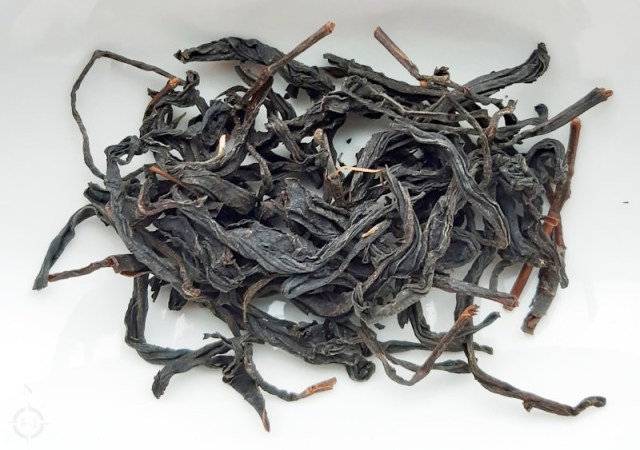
Back in mid-October I ordered three interesting looking Taiwanese black teas from House of Tea, and in this post I’ll be taking a closer look at the first of them.
House of Tea’s notes tell us that this tea’s raw material originates from the area around Sun Moon Lake, which is in Yu Chi township of Nantou county. The leaves are an Assamica cultivar, TTES 8, which apparently has its origins in the Japanese occupation of Taiwan when it was developed in order to gain a foothold in the worldwide black tea market. They go on to say that the cultivar has been “refined” since then. These particular leaves were grown at an elevation of about 1000 metres, and were hand plucked.
Given this tea’s Assamica heritage I thought it best to initially go with a broadly Western style approach.
The dry leaf wasn’t giving much away bar a slight aroma of cacao nibs, but after a few seconds in the warmed up pot started singing a song about Swedish rye crispbread, which was as pleasant as it was unexpected. Even before leaves and water met for the first time this tea was coming across as a bit different from the other Taiwanese black teas I’d sampled.
Steeping Method
-
Water Used: Filtered tap water
-
Weight of dry leaf: 3 grams
-
Steeping vessel: 200 ml ceramic teapot
-
Water temperature: 95°C
-
No. & duration: 4 infusions of 1½, 2, 4, and 6 minutes duration

The first steeping was really interesting. That lychee fruitiness that I’ve found with other teas from the Sun Moon Lake region which is usually in your face from the second you open up your caddy popped up to say hello, but here it was sat quietly at the back minding its own business, behind the rye bread thing as well as a light, bitter, crispness. The liquor didn’t feel like a traditional Assam, or a Taiwanese black, or any other black tea for that matter. This kid really was doin’ his own thing, which was resulting in a luscious, lip-sticky cupful that had me thinking of Bourbon cream biscuits.
The next round kind of bucked the trend for these shortish Western style sessions – rather than seeing a slight tail-off in the intensity of flavour the volume dial was turned up a notch, with a strong 90% cacao dark chocolate note coming through.
The third infusion saw a slight drop off, but I still thought it worthwhile to go for another round, but just to play it safe I upped the water temperature to boiling and gave the pot a couple of showers. The result was decent enough, but clearly was the end of the road for these leaves.

Looking forward, I’m going to have to try gong-fuing this tea. I suspect that there’s more here than meets the eye as well as the taste buds, and that a longer session might help to find out what that is and where it’s hiding.
This was an intriguing tea, and no mistake, with a real “whole worth more than the sum of the parts” feel to it. If you’d have asked me beforehand how I would have expected an Assamica cultivar grown and processed on Taiwan to turn out, I wouldn’t have thought something this different, and well, nice would have been the result.
Good stuff.

Pingback: Yu Chi Hong Yun | Northern Teaist
Pingback: Lapsang Taiwan | Northern Teaist
Pingback: Out With The Old, In With The New | Northern Teaist